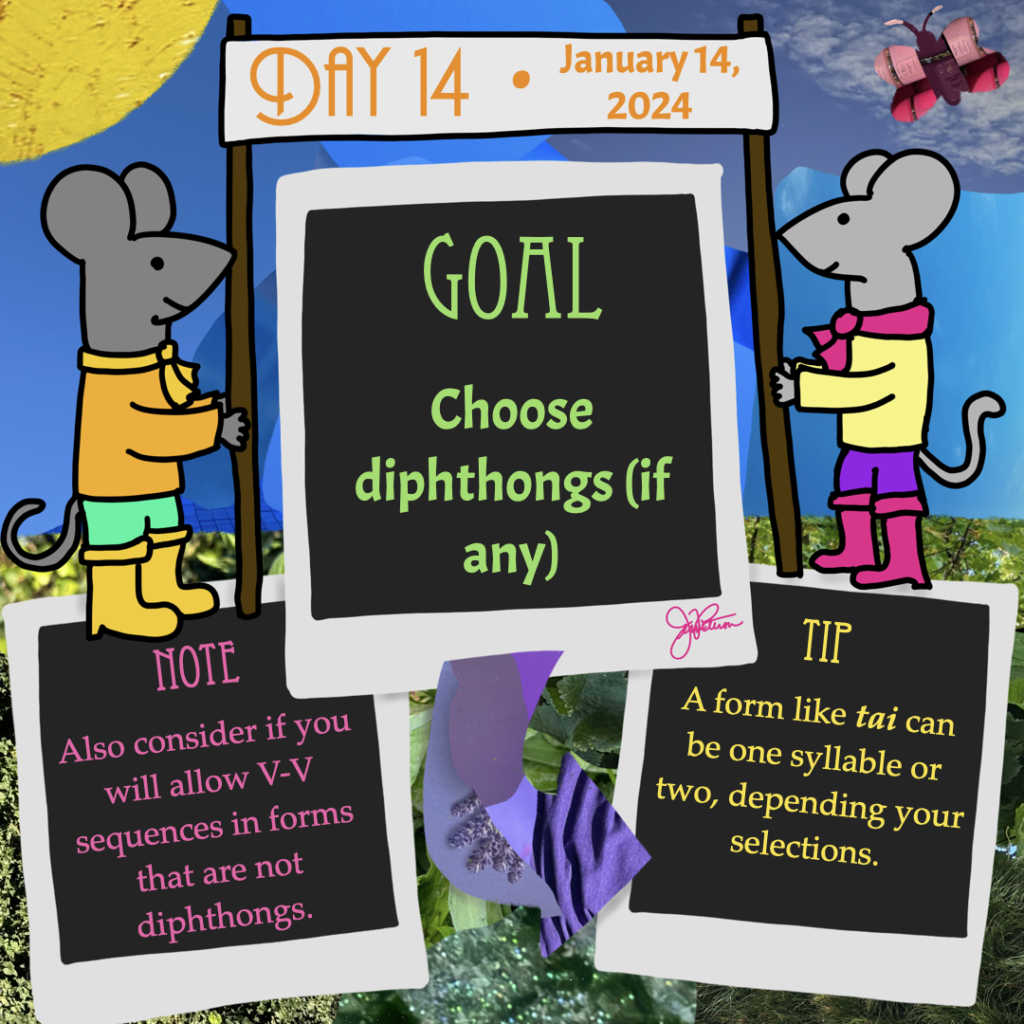
Goal: Choose diphthongs (if any)
Note: As you make your decision, consider if you will allow V-V sequences in forms.
Tip: A form like tai can be one syllable or two, depending on your selections.
Work focus: Organize/Plan/Structure
As I mentioned in yesterday’s post, a diphthong requires movement during production but are perceived as a single vowel unit. This decision is especially important as we move into larger sound units, such as syllables. A vowel-vowel sequence may require two syllables in one language but represent a single syllable in another language. Consider the difference between the words “bowing” (as in bowing a stringed instrument) and “boing.” The first word is two syllables and can be transcribed as [bo.iŋ] (or [bo.ɪŋ]) for pronunciations that lack a strong [w] glide between those vowel sounds. The second word, though produced with the same basic sounds, squishes those vowels together into a single unit as [boiŋ]; transcriptions for this diphthong may range from [boɪŋ] to [bɔiŋ], but the point remains that it is a single-syllable unit with a diphthong).
If you aren’t familiar with a lot of diphthongs, a good place to start is by considering diphthongs that can be produced by the monophthongs you have in your vowel inventory, focusing on the ones that move from one extreme to another. For instance, if you have a three-vowel system with [i, u, a], you could consider these diphthongs: [ai] and [au] are low-to-high diphthongs, [ia] and [ua] are high-to-low diphthongs, [iu] is a front-to-back diphthong, and [ui] is a back-to-front diphthong. If you have a five-vowel system with [i, e, u, o, a], focusing on the extremes means consider diphthongs like [ai] before less extreme ones like [ae] and [ei]. All are technically possible, but the more extreme the movement in the diphthong, the more acoustically different the unit will sound from the monophthongs.
Even if you decide not to include diphthongs in your proto-forms, I encourage you to use today to research the diphthongs possible in languages (if for no other reason than to hear the diversity in them!). Dutch is a great language to research when you want to see amazing combinations of vowel sounds in a single diphthong. Dutch diphthongs are a result of many years of language evolution, and they just might inspire you to consider ways you want to incorporate diphthongs through a series of sound changes when we get to that stage.
